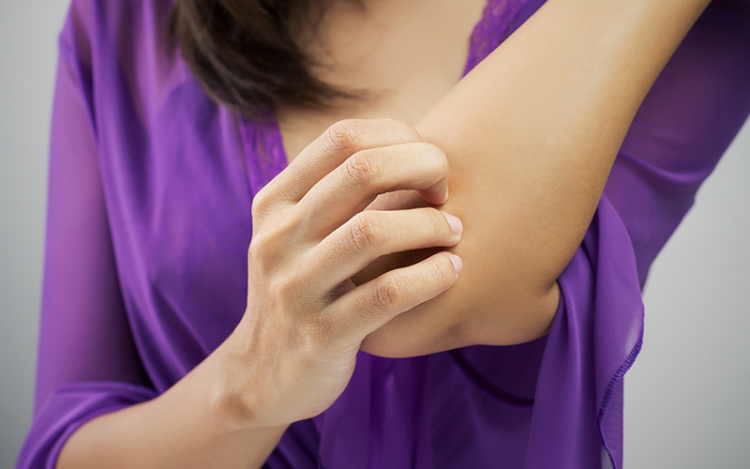Your child comes home from school with a suspicious red, circular rash on her leg. You think it might be ringworm.
The good news is that though ringworm sounds like something caused by a worm (yikes!), the ringworm rash is actually a skin infection caused by a fungus on the outer layer of the skin. The bad news is that it’s highly contagious.
Symptoms of ringworm, also called tinea corporis, depend on where you get the infection. When it’s on the outer layer of the skin, a ringworm infection typically starts as a flat, scaly area that may be red and itchy. The patches then become raised and eventually blister and ooze. Sometimes, the outside edges are deeper red in color and are shaped like a “ring,” which is how the infection got its name.
Other times, the patches of infection have defined and raised edges that can be irregular or wavy. Occasionally, red bumps can develop inside the ring.
The ringworm rash can also appear on the toenails or fingernails, causing them to become thick and discolored. If the rash develops on the scalp, it can cause bald patches. More than one patch of ringworm can appear at one time, and the patches can sometimes overlap.
What Causes the Ringworm Rash?
Similar to other common fungal skin infections like athlete’s foot or jock itch, ringworm is generally spread by touching another person who has the infection or by sharing items that have been in contact with an infected person such as towels, sheets, clothes and even chairs. The fungus can also be spread from pets or other animals with the fungal infection and sometimes from standing barefoot in soil that is hosting the fungi.
Though anyone can get ringworm, people who live in warmer climates are at greater risk, as are those with compromised immune systems. If you have close contact with animals or use public showers and locker rooms — or if you play sports with a lot of skin-to-skin contact such as wrestling — you are also at a greater risk for contracting ringworm.
Preventing ringworm isn’t easy because the fungus that causes it is very common. The best way to prevent ringworm is to not share hairbrushes, towels, clothes or bedding with someone who may be infected. When using public swimming pools, locker rooms and showers, always wear plastic sandals or flip-flops. It’s also important to wash your hands often throughout the day.
“The key to protecting yourself from any fungal infection is to keep your skin clean and dry, particularly skin creases and feet,” says Kelly Moeller, a certified physician assistant with U.S. Dermatology Partners Marshall. “Change your socks and underwear every day, keep sports uniforms and equipment clean. Check your pets for skin problems, and if anything looks suspicious, bring them to your veterinarian.”
In animals, ringworm often looks like a patch of missing fur. In some cases, there are no visible indications that an animal is infected.
How to Treat Ringworm
“There are several skin conditions that look similar to ringworm,” says Moeller. “To get a proper diagnosis, go to a trusted dermatology clinic. Fungal skin infections like ringworm are relatively easy to diagnose with a simple skin exam.”
To confirm ringworm, your doctor may scrape some skin from the affected area and examine it under a microscope.
Some natural home remedies to treat ringworm include keeping the area clean with antibacterial soap and water and applying apple cider vinegar to the affected skin with a cotton ball several times each day. Other home remedies include treating the area with tea tree essential oil or tea tree oil diluted with a carrier oil like coconut oil, which has antimicrobial and antifungal properties.
However, most dermatologists agree that the best way to treat ringworm on the skin is by applying a topical over-the-counter antifungal cream like Lamisil, Monistat-Derm and Lotrimin directly to the affected area. Treatment could take several weeks to completely kill the fungus that causes the ringworm rash.
If your symptoms don’t begin to clear up or improve within a week or two, it might be time to try something stronger. For ringworm rashes on the nails or scalp — or in severe or widespread cases — a dermatologist may recommend a prescription-strength antifungal cream combined with a steroid or oral antifungal medication.
Looking to Visit a Dermatologist?
Are you experiencing symptoms of an itchy ringworm rash? Have you had a suspicious rash for more than two weeks that hasn’t improved? To learn more, contact U.S. Dermatology Partners today to make an appointment with one of our board-certified dermatologists. We have multiple locations throughout the country, so fill out our simple online form to get in touch with us. One of our local team members will reach out to you shortly to answer your questions or schedule an appointment for you to visit us soon.
Find a location near me
or

